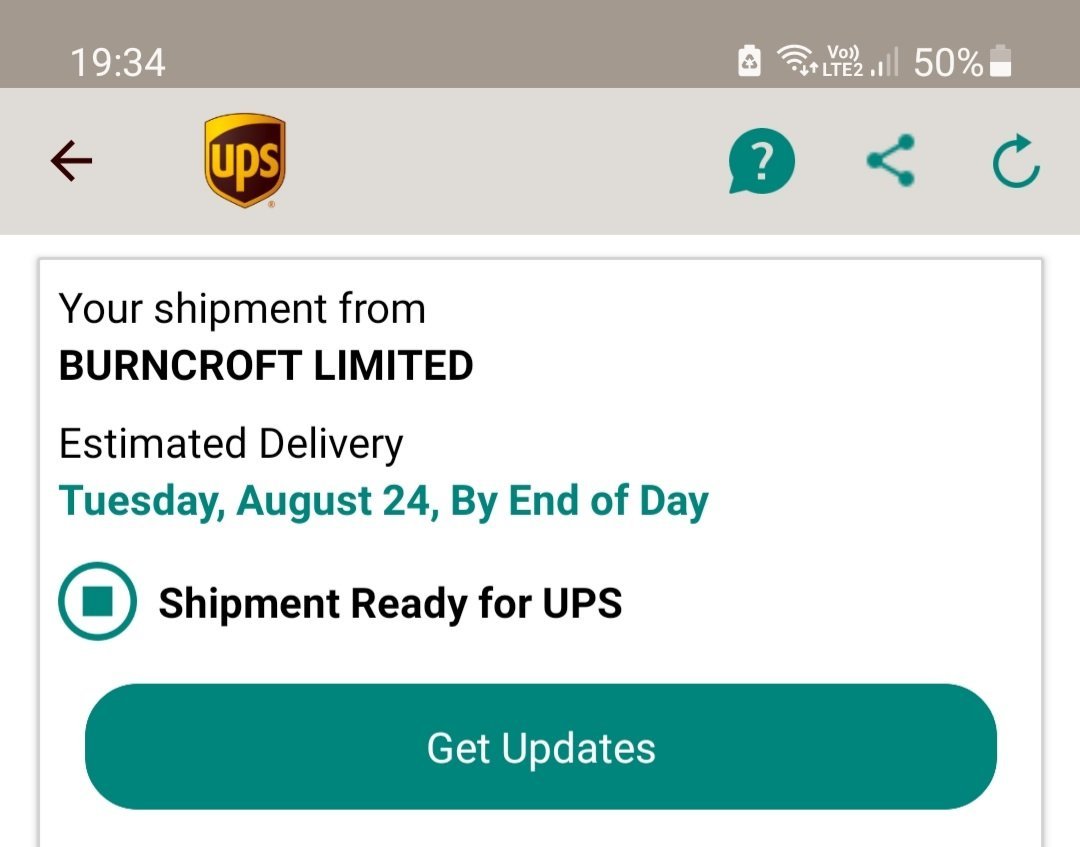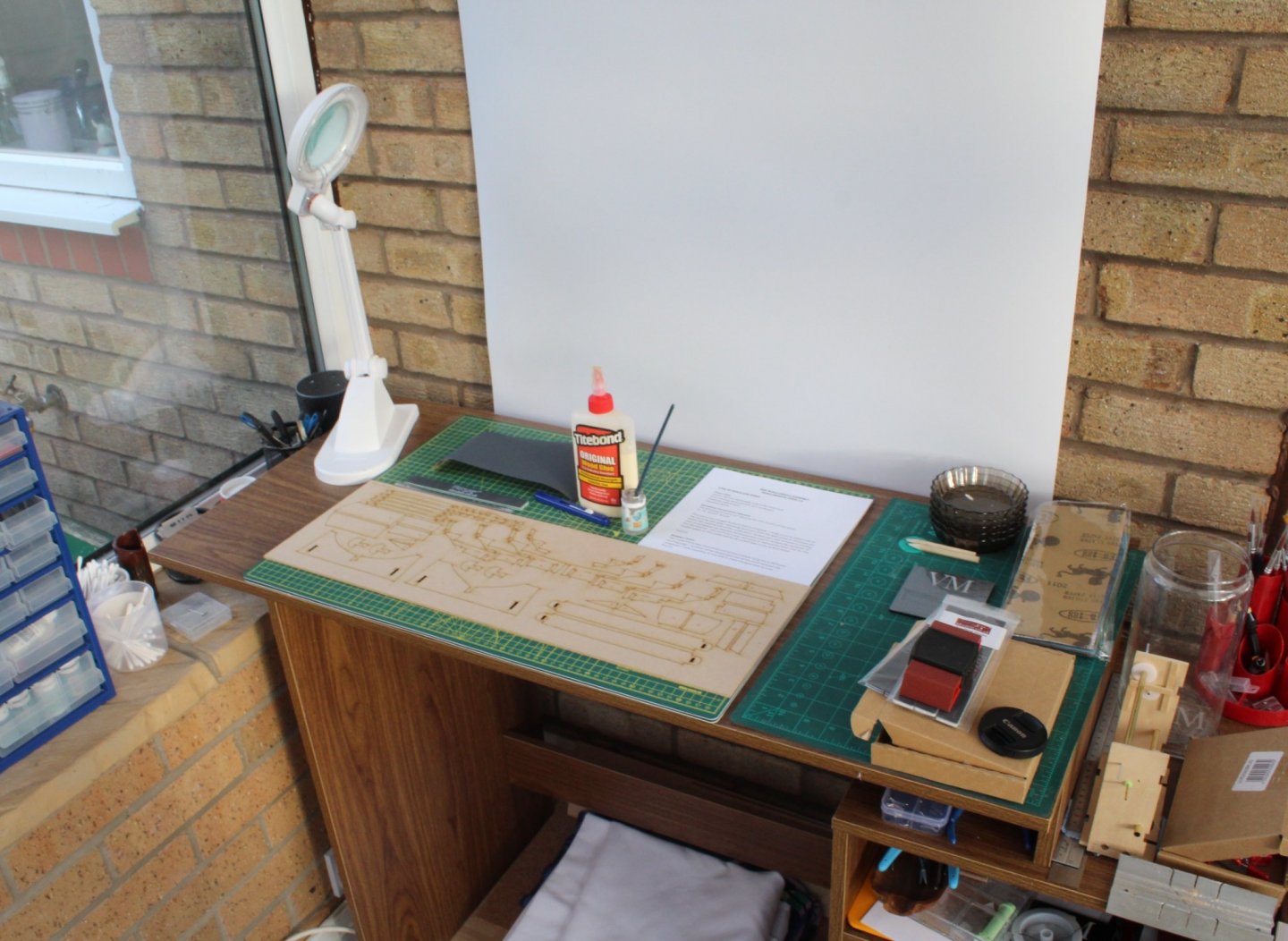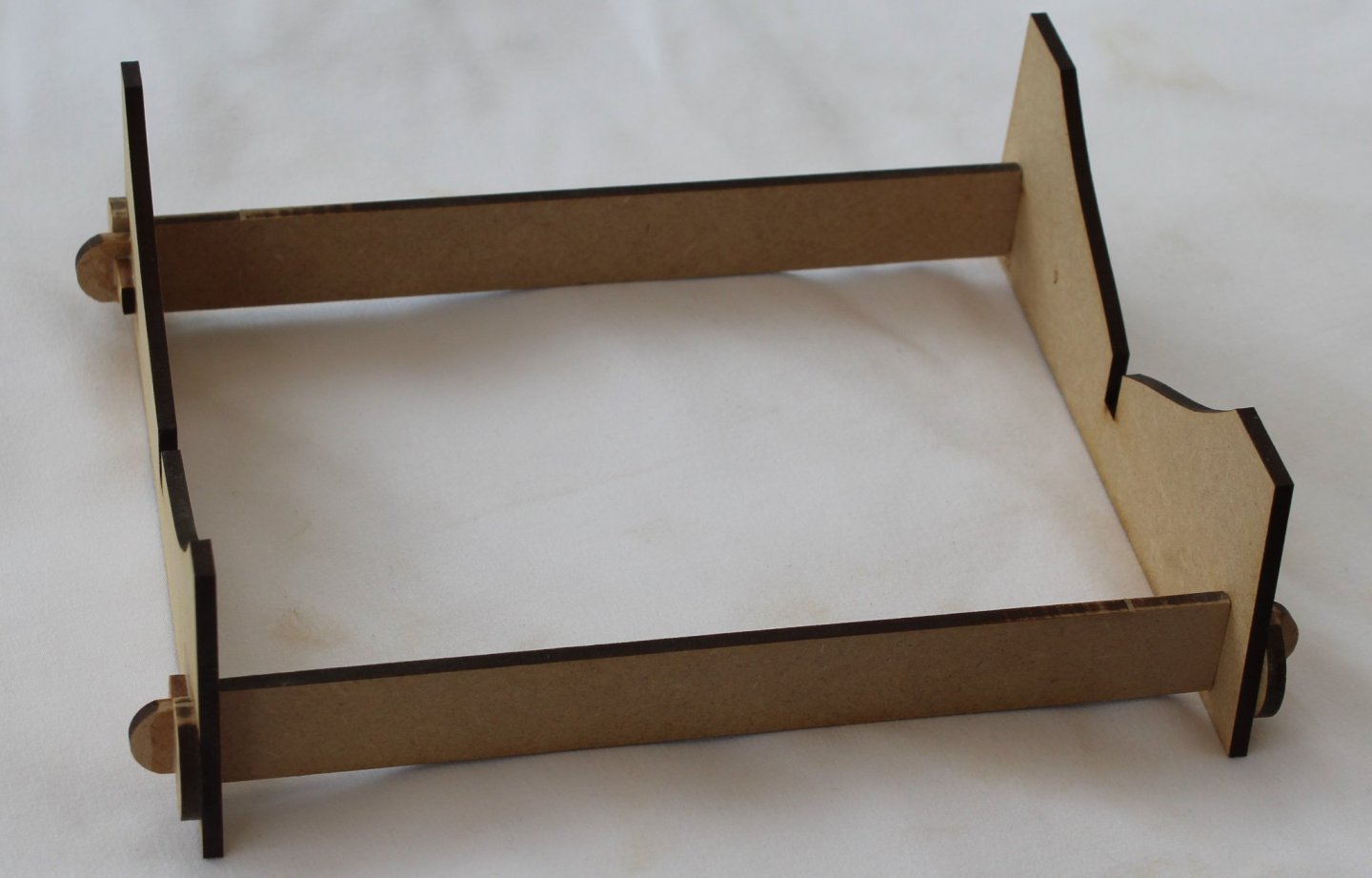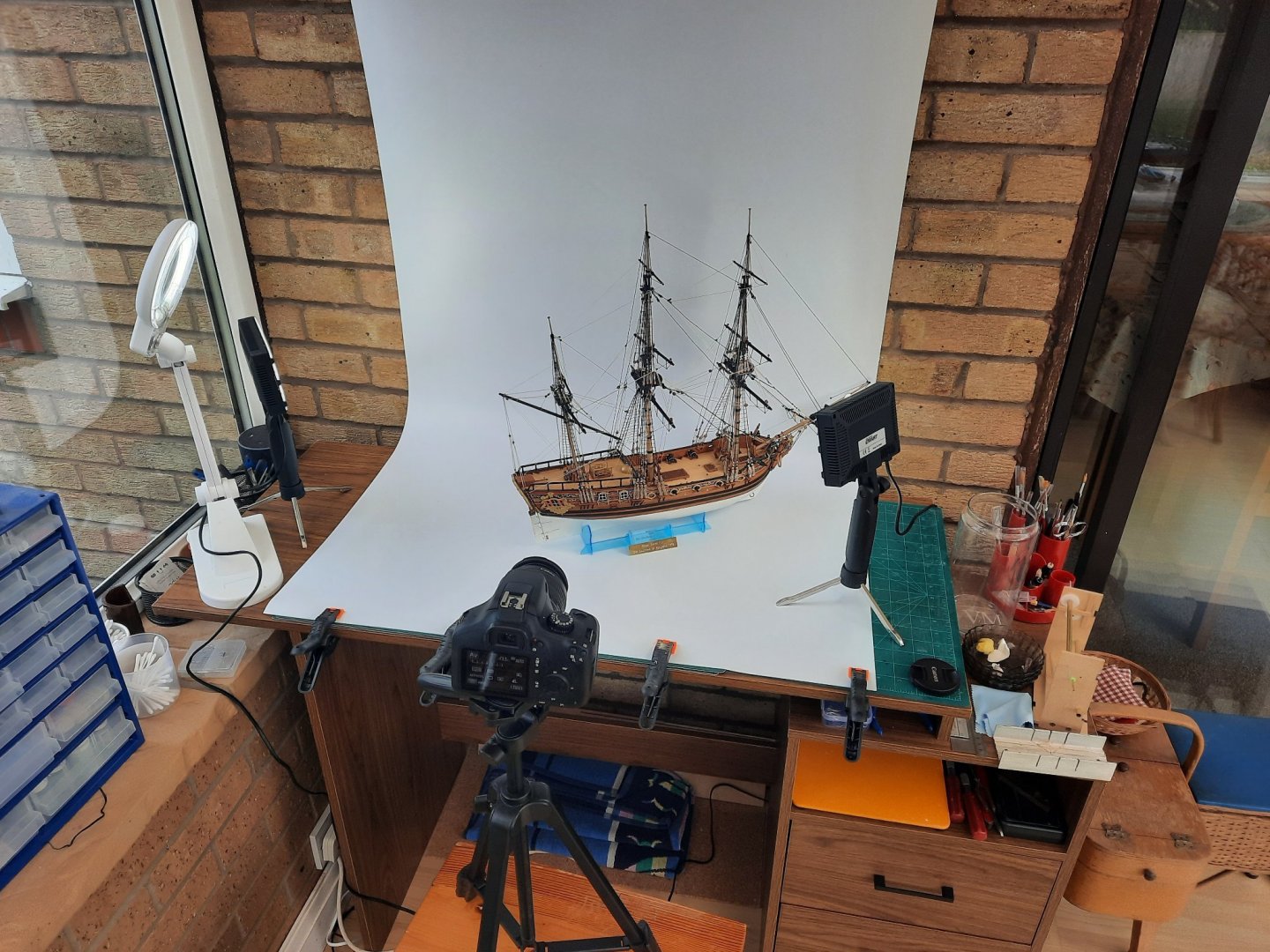-
Posts
2,732 -
Joined
-
Last visited
Content Type
Profiles
Forums
Gallery
Events
Posts posted by Glenn-UK
-
-
-
-
This is an "unofficial" build log post, so is not linked to my build log index and is not in the format I'm planning to use for each completed task post.
I have had a good day in the shipyard. I am ready to start the off boat fairing of bulkhead 13 assy (stern) and bulkhead 1 (bow) assy. Before I make a start I have drawn some pencil lines to get an idea of how much material needs to be removed. There is quite a lot of material to remove so I will summon up the courage overnight and make a start in the morning.
Close up of bulkhead 13 assy showing fairing pencil lines
Keel with dry fitted bulkheads
Keel with dry fitted bulkheads with tape protecting the infill
- GrandpaPhil, mtaylor, Canute and 8 others
-
 11
11
-
MDF BUILD CRADLE ASSEMBLY
BUILD MANUAL STEPS 1-5Tools Used
Craft knife
Flory sanding stick and 400- grit sandpaper
Titebond original glue
Old paint brush and small water pot
Gathering the Materials Required
The following kit parts are required for this section of the build:
31, 32, 33 (x2), 34 (x4) (all located on the 3mm MDF 2 sheet)
Photograph of my work area, ready to start work on HMS Sphinx
Close up photograph of the tools and material for this task. The sheet of paper in the top right of the picture is a printout of my prebuild notes for this task.
I made a cut on either side of the securing tabs when removing each part from the MDF sheet to minimise the excess tab material left of the cradle parts. As each part was removed a sanding stick was used to remove the remnants of the tab material.
This is a photograph of the cradle parts ready for assembly.
Assembly Phase
When I started to assembly the cradle I found it necessary to remove the laser char from the tab ends of parts 33 and 34 to enable them to fit into the locating slots.
Photograph of the tab ends after sanding.
After the laser char had been removed from the tab ends the cradle frame was assembled without any problems and locked in place using the 4 off frame securing pegs. I brushed some diluted glue into all the joints and put the completed cradle assembly to one side to allow the glue time to cure.
Photograph of the completed cradle assembly
- Jasseji, GrandpaPhil, JeffT and 11 others
-
 14
14
-
KIT DELIVERED
The pre ordered HMS Sphinx kit has now arrived and I am now really looking forward to starting the build. The prototype kit built by James Hatch looks amazing and is the build standard I would like to aspire to.
I downloaded on-line build manual earlier this month in eager anticipation of receiving the kit and I spent many hours getting familiar with the build processes and, where necessary, adding to my tool and paint collection.
I plan to take my time with this build (which will be a first for me!). I have started a build log, which will show how I have implemented the information contained in the building manual (rev 1) and the 23 off plan sheets. I will also share any tips, problems, etc. which may help others with their build.
The kit was well packaged and protected
There was a little bit of transit damage to the box, but the kit was so well packed and protected there were no problems with the kit once the box was opened.
An example of the protection
A very nice touch, a HMS Sphinx coaster
The pear wood fitting (an optional extra)
The manual looks very good
The plan sheets are very well presented
More layers of protection
- Canute, Ryland Craze, mtaylor and 12 others
-
 15
15
-
Looks like I'm going nowhere on Tuesday.
😀

- Rustyj, hollowneck, BobG and 3 others
-
 6
6
-
-
On 8/17/2021 at 10:03 AM, chris watton said:
I am told I will receive the printed material (plans, manual and box label) on Friday
Fingers crossed you get a big delivery of printed material today😀
- mtaylor, BobG and chris watton
-
 3
3
-
I have started my HMS Sphinx build log as a word document to explain (to myself) how I plan to tackle the various stages.
- Blue Ensign, mtaylor, Martin W and 2 others
-
 5
5
-
10 hours ago, bruce d said:
Hello Glen,
These people are good to deal with:
... and they have other stuff too.
HTH
Bruce
Thanks Bruce
Ordered from them
-
I have spent a bit of time trying to get use to using the new camera together with some photo editing software. There is so much to learn and I know I have only scratched the surface but I am amazed at what can be done. Many thanks to Tim and Glenn (USA) for their help.
This was a picture I took and is the standard jpg file direct from the camera
With this version of the same photo I have taken the raw file from the camera and applied a few effects. I have added a bit of everything that Adobe Lightroom can offer so I can could get an idea of what each control does. No doubt I have gone a tad overboard with the effects but nonetheless the results are, to a novice like me, staggering.
-
-
-
Having spent some time reading the manual and James's build log the HMS Sphinx build is very well explained, the photos really help also. My initial impression is this will probably be a time consuming project for me, maybe 9 to 12 months, but hopfully it will be relatively problem free. There are a couple of build items I'm not sure about at the moment but I hoping once the kit arrives all will become clear.😀
-
Looks good. My local model shop model shop gave me the inside track on the super phalic telling me its like a wood glue with ca grab properties.
-
5 minutes ago, chris watton said:
Sphinx kits will not start shipping until the week after next
Perfect timing for me, as I'm away from home until Saturday.
- BobG, chris watton, Old Collingwood and 4 others
-
 7
7
-
@chris watton much deserved success with the Sphinx venture. The standard of your previous kits proved without doubt your designs are cut above the others. The work undertaken by @James H in support aldo shows what is possible to build by mere mortals like me.
- Canute, chris watton, thibaultron and 5 others
-
 8
8
-
5 minutes ago, DelF said:
Just downloaded and skim-read the manual

Ditto. Interesting to see that the first planking at stern was finished short of the stern post which avoids sanding the false keel thinner with a beading line.
-
-
-
4 minutes ago, chris watton said:
We are hoping to have the manual on the website soon
Looking forward to downloading the manual. Great news everything is now with the printers.
- Canute, mtaylor and thibaultron
-
 3
3
-
-
Thanks @DelF
With the help already provided by Richard, Tim, Glenn (USA), James, etc. I have made some improvements, but there is still much more I need to do, so more experimentation needed as I get to grips with it all.
Test Set Up No 1
Some initial pictures
- DelF, Rik Thistle, mtaylor and 1 other
-
 4
4
-
@Rik Thistle many thanks. I am going to experiment with using the Canon's AV mode which will let me adjust the f setting manually. I will also look at adjusting the "setting exposure compensation" for brighter or darker pictures









HMS Sphinx 1775 by Glenn-UK - Vanguard Models - 1:64
in - Kit build logs for subjects built from 1751 - 1800
Posted · Edited by glennard2523
STERN BULKHEAD 13 & 13-1 ASSEMBLY
BUILD MANUAL STEPS 6-16
LINK TO MY BUILD LOG INDEX
Tools Used
Pencil
Craft knife
Clamps
Flory sanding stick
120 & 400- grit sandpaper
Titebond original glue
Old paint brush
Amati’s special cleaner sanding block, reference B7140
Ginour cordless rotary multi-tool
Gathering the materials required
The following kit parts are required for this section of the build:
0, 13, 13-1 13a (x2), 13b (x2), 13c (x2), 13d (x2), 13e (x2), 24 (x2)
I made a cut on either side of the securing tabs when removing each part from the MDF sheet to minimise the excess tab material. As each part was removed a sanding stick was used to remove the remnants of the tab material.
Build Tip-1
In order to ensure the bulkheads are correctly seated I find it beneficial to mark the bottom of the slots, both the keel and on each bulkhead. When the bulkheads are correctly seated pencil marks will be aligned.
Build Tip-2
I placed both bulkheads 13 and 13-1 in their respective slots on the keel and so I could mark the outer edge of bulkhead 13-1 on bulkhead 13. This provides a good guide to the where the glue needs to be applied when the two bulkheads are glued together later in this task.
Adding the bulkhead patterns
Bulkhead 13-1 was then removed from the keel so the two sets of the bulkhead patterns (13a-13f) could be glued in position. Bulkhead 13-1 was then put to one side to allow time for the glue to cure.
Assembly Of Bulkhead 13 and 13-1
A liberal coating of glue was brushed to the lower section of bulkhead 13 (in the marked area) then bulkhead 13-1 was slotted back to the keel. It is important to note that the bulkhead 13 & 13-1 assembly is not glued to the keel during this process as it needs to be removed for shaping once the glue has fully cured. I added some clamps and removed the assembly from the keel as the glue started to cure as an added precaution.
Adding The stern planking patterns
With the 13-1 bulkhead assembly back on the keel the two stern planking patterns were glued in place and as the glue started to cure I once again removed the assembly from the keel.
Shaping Of Stern Bulkhead 13 & 13-1 Assembly
Once the glue had fully cured (overnight), as per the build manual instructions, tape was added to the top section of bulkhead 13 for protection of the infill part.
I made some pencil marks to indicate the material to be removed.
I started the sanding and shaping process using my Ginour cordless rotary multi-tool, as my dremel had stopped working and was beyond repair. I then used a mixture of sanding sticks, sandpaper and the sanding block to complete the process.
I am sure more sanding will be required once the hull is ready to be faired prior to the first planking.